Blog
Bad Posture? Simple Things to Improve Your Posture.

Have you ever done something and thought, I am making this harder than I need to or think there has to be an easier way to do this?
Many of us make posture harder and use way more effort than we need to use.
Here is an example.
How do you change your posture from what you think is slouching to not slouching?
Often people will pull their shoulders back, lift their chest or arch their back and pull in their abdominal muscles.
That strategy for posture uses at least seven of the larger muscles in your body just to sit or stand. That does not seem very efficient. Along with a lack of efficiency, this type of change will enforce misalignment of our spine, by using larger moving muscles for posture, putting extra pressure on our joints and organs while limiting how our body should move when breathing.
What should you do if you want a ‘good’ posture while using less effort?
When seated:
Be sure that you are sitting on your SITS bones NOT your tails bone. This will put your weight th...
Top 3 Lower Body Exercises

In this fourth and final installment about improving flexibility in your hips we are going to show the optimal way to perform some common exercises to get the most benefit for the health of your muscles and joints.
8 Key reminders:
- Always aim to maintain alignment of your rib cage over your hips
- Maintain your foot tripod
- Avoid cues like, pull your abs in or squeeze your glutes
- Pain is NOT ok
- Your flexibility should improve when you execute the exercises correctly
- To maintain the above you may find you do not move as deep or as far into and exercise or lift as much weight
- Be ok with less is more sometimes in the case of reps/sets and weight for the health of your joints and muscles. You can build back up, now with optimal form
- How you exercise, repetition after repetition will translate into your posture and how you move.
Last issue we shared the importance of being able to hinge at the hip joint. Note in the model below how no matter the exercise the motion happens at...
This Motion is Key to Great Feeling Hips & Back

If you have been following our recent newsletters, we have been sharing strategies to help your hips move and feel better.
In this issue, we will discuss a key to keeping the ideal motion of your hips during everyday activities as well as during exercise. Bonus to the concept we will discuss today it is also key for the health of your spine.
In the picture below Dr. Osar is demonstrating an optimal hip hinge.
Keys to a hip hinge:
- The motion happens in the hip joint (where Dr. Osar's hands are placed)
- Your head, trunk, spine, and pelvis move together as one.
- It is ok to have a slight knee bend


In the picture above Dr. Osar is showing us a suboptimal hip hinge. You can see the moton is occurring at the low back and neck. If you look at the difference between the glutes in the two pictures notice the glutes in the top photo are in alignment with the rest of the body and in the lower picture the glutes are almost pointing down toward the floor.
The hip hinge is so impo...
The Importance of a Principle Based System When Exercising
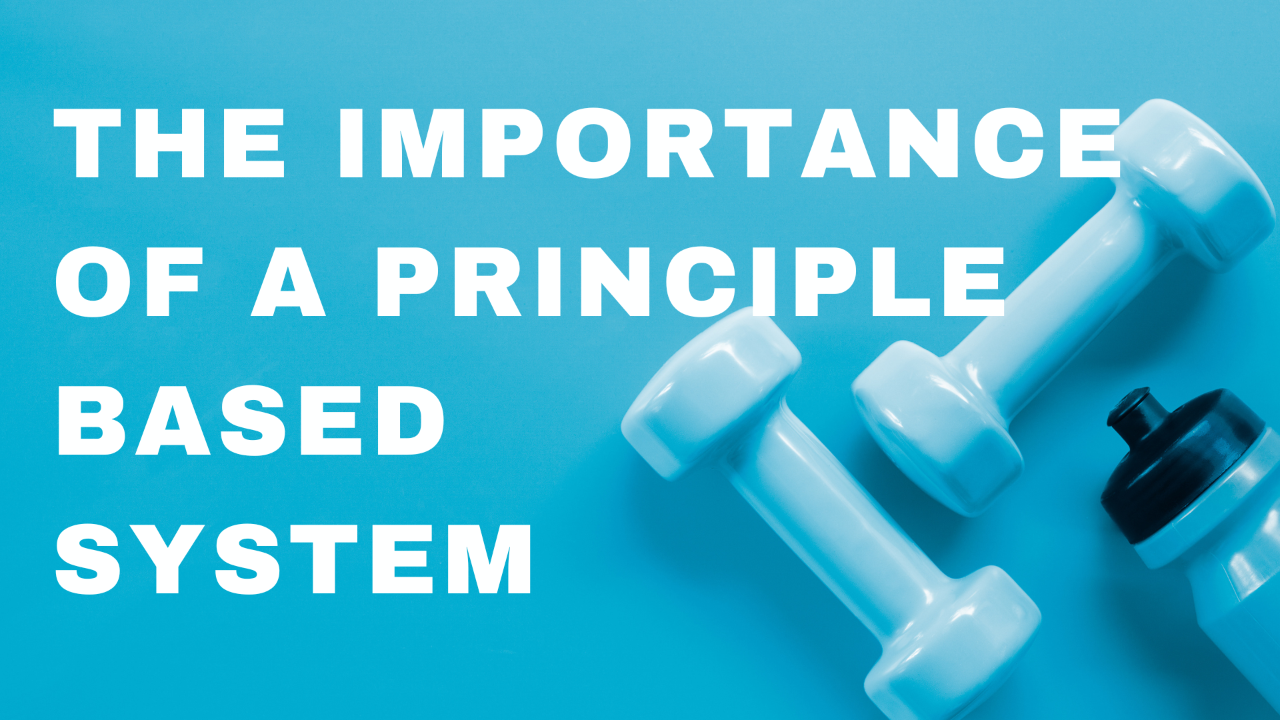
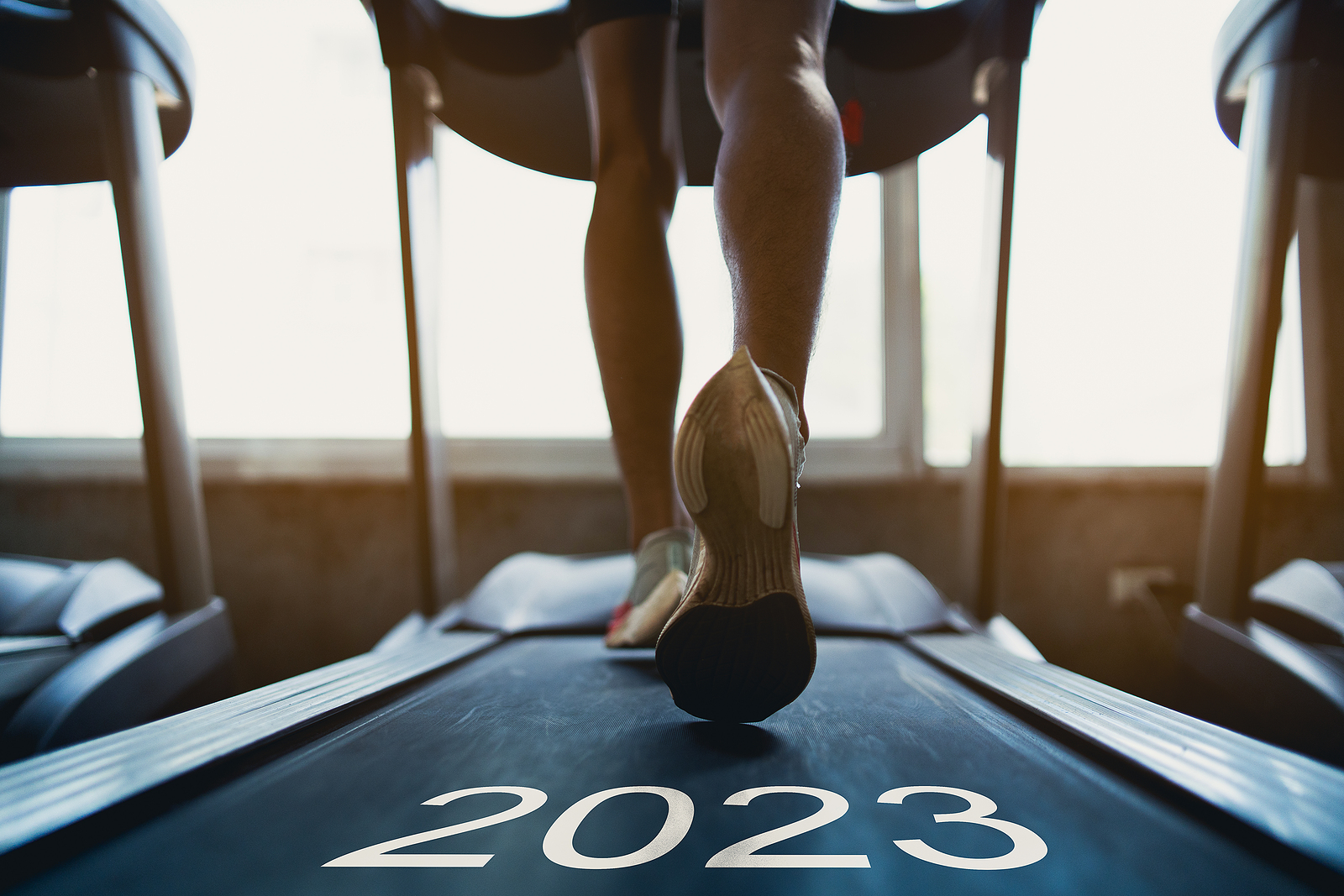
There is a great quote by Ralph Waldo Emerson, “As to methods: there may be a million and then some, but principles are few. The man who grasps principles can successfully select his own methods. The man who tries methods, ignoring principles, is sure to have trouble.”
Often the new year brings the need to evaluate, make changes, etc. Health and fitness are significant areas where people consider and want to make a change this time of year.
If you are finding that you are in that place this time of year and are looking to start a fitness program, be sure the program or the professional you are working with works in a principle-based system.
You can use many different methods when you exercise with a set of principles.
The Integrative Movement System which we use in our studio is based on three simple principles to ensure your body moves with its greatest efficiency:
- Alignment
- Breathe
- Control
When you move and exercise, utilizing optimal joint alignment, three-dimensional...
The Squat Challenge

In the last newsletter, we challenged you to a plank challenge. Not the usual challenge of how long you could hold it. Instead, it was how well you could do the plank at various challenge levels.
How did you do? Were you able to progress to the counter height plank, maintain your ABCs and maintain optimal range of motion after?
This week we will challenge you to earn the right to move through some squat patterns. We have to squat throughout our day for basic activities of daily living, so it would seem vital that we do it well. Squats are also a popular exercise so if you are going to do repetition after repetition, let's be sure you are doing it in a way that supports the health and alignment of your joints.
 Remember to use your ABCs:
Remember to use your ABCs:
A stands for alignment of the joints. As outlined in the photos above, maintain your rib cage in alignment with your hips and pelvis. When you can do this, it maintains optimal spine alignment, allowing your core muscles to naturally turn on to...
Debunking the myths about falling
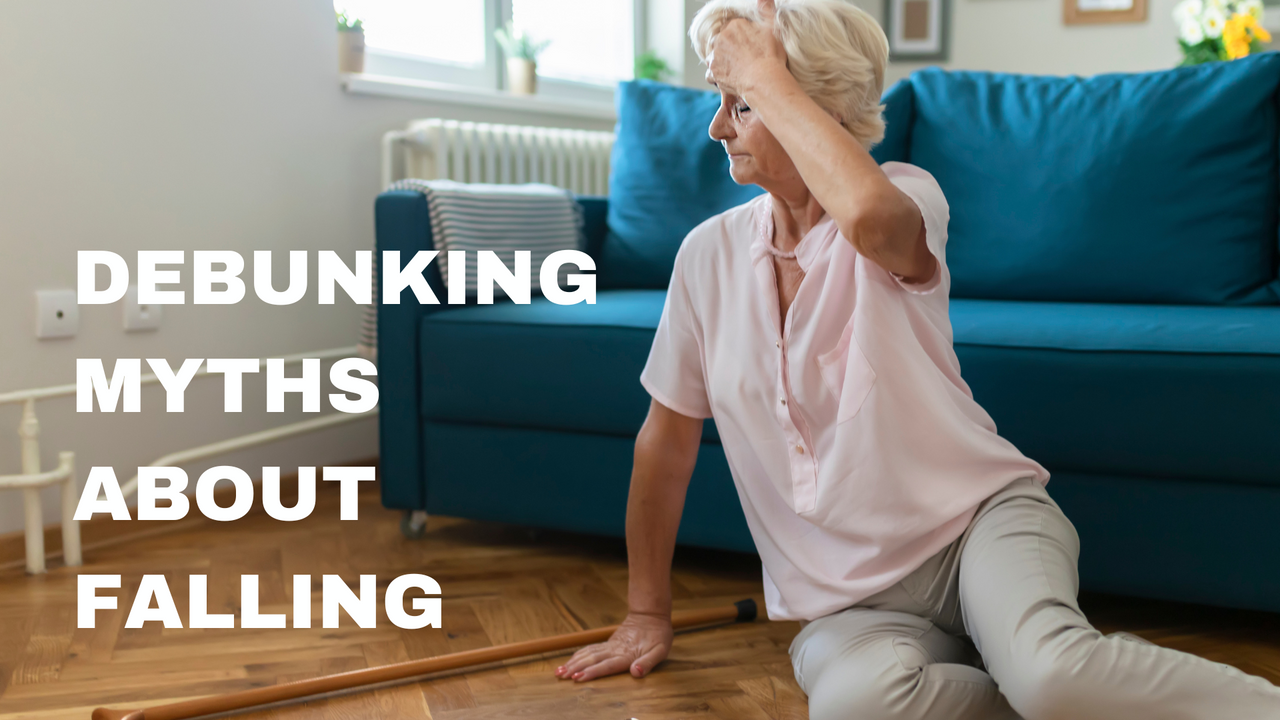
According to the National Council on Aging, every 11 seconds, an adult is seen in the E.R. for a fall-related injury,
The end of September was Fall Prevention week in the U.S. As a promotion, the National Council on Aging wrote the article, Debunking the Myths of Older Adult Falls. Of the ten myths listed, #3-#5 stuck out the most.

Physical activity is one of the best ways to build and maintain strength and flexibility. Strength and flexibility are essential to balance.
A few months ago, we covered a few things you can do to work on your balance. They included:
- Spend time breathing three-dimensionally to improve the flexibility of your spine, rib cage, and hips.
- Stand with your weight over your foot tripod, meaning your weight should be equally distributed between the base of your big toe, small toe, and heel, giving you the broadest base to stand on.
These will go a long way to improving your balance, flexibility, and core strength.
The best thing you can do if you are ...
4 Things To Stop Doing For the Health of Your Back

According to a recent article published by the NIH (July 2022), back pain remains one of the top reasons for doctor's visits.
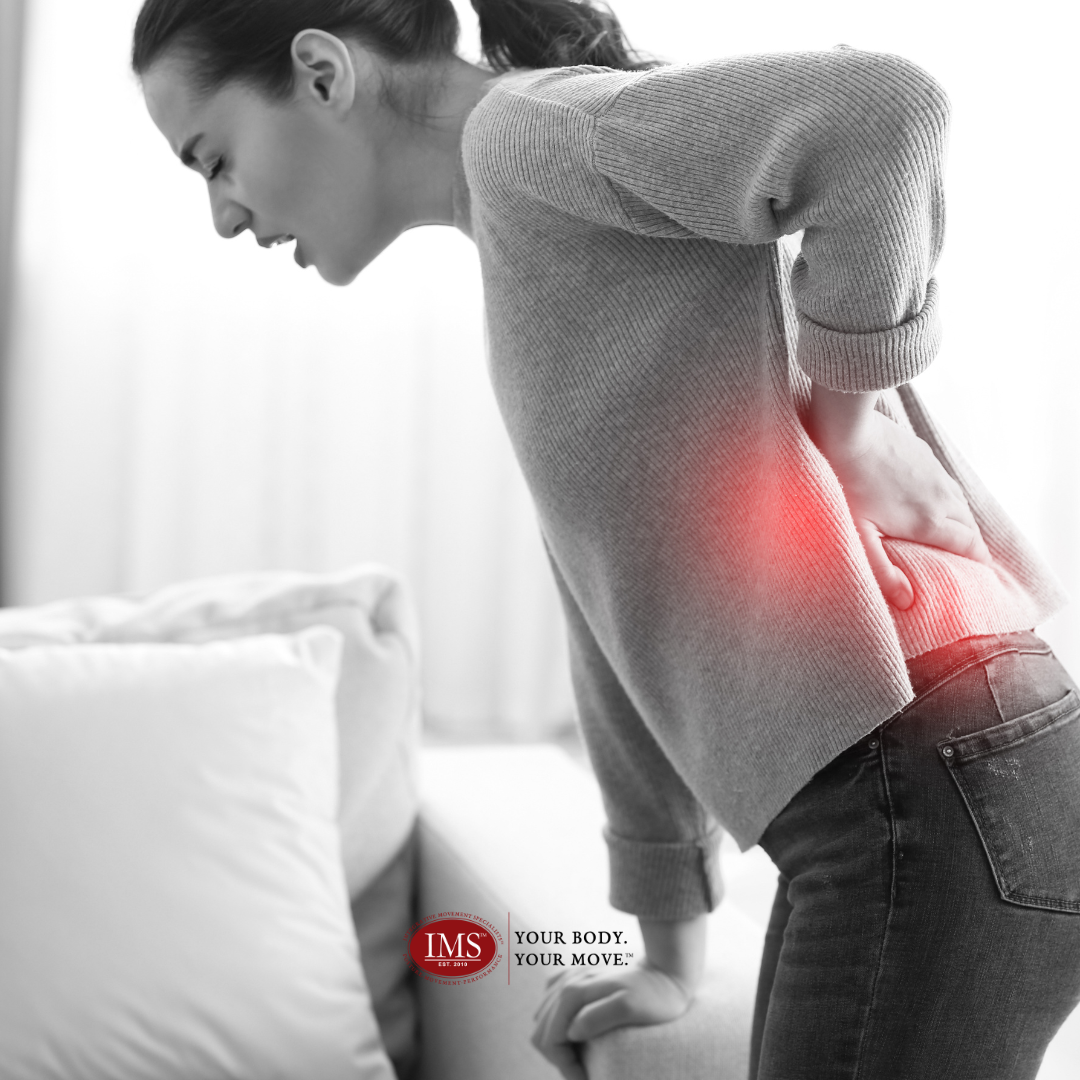
The article lists various back pain causes, including congenital to non-spine related and risk factors from age to psychological.
The article's recommendations for helping with back include medication, strengthening, stretching, and surgery.
One thing the article did not cover:
what you should stop doing for the health of your back and spine.
The picture below shows four everyday activities you may do throughout your day to move or for posture.
Each of these will put pressure on your spine and change the soft tissue (muscles, tendon, ligaments and fascia) in your lower back area. Eventually, the alignment of your spine will change and put pressure on your discs, spinal cord, and spinal nerves.
So the number #1 thing you can do is stop or modify the following activities:

- Stop bending through your low back. When you bend, bend at your hip joint, not...
What is the best way to squat?
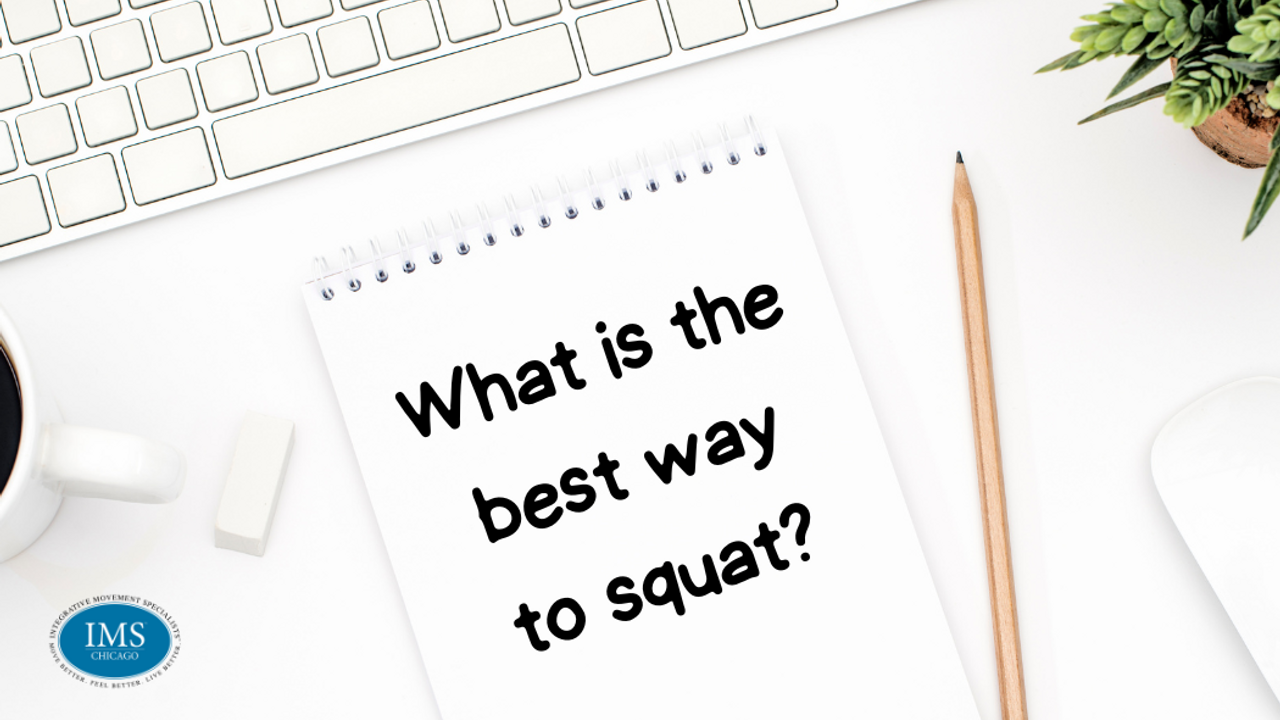
Clients always ask, what is the best way to squat?
Do you know the answer to the question below?
When you squat or sit down, do you tend to bend first at:
a. your neck
b. your knees
c. your low back
d. your hips
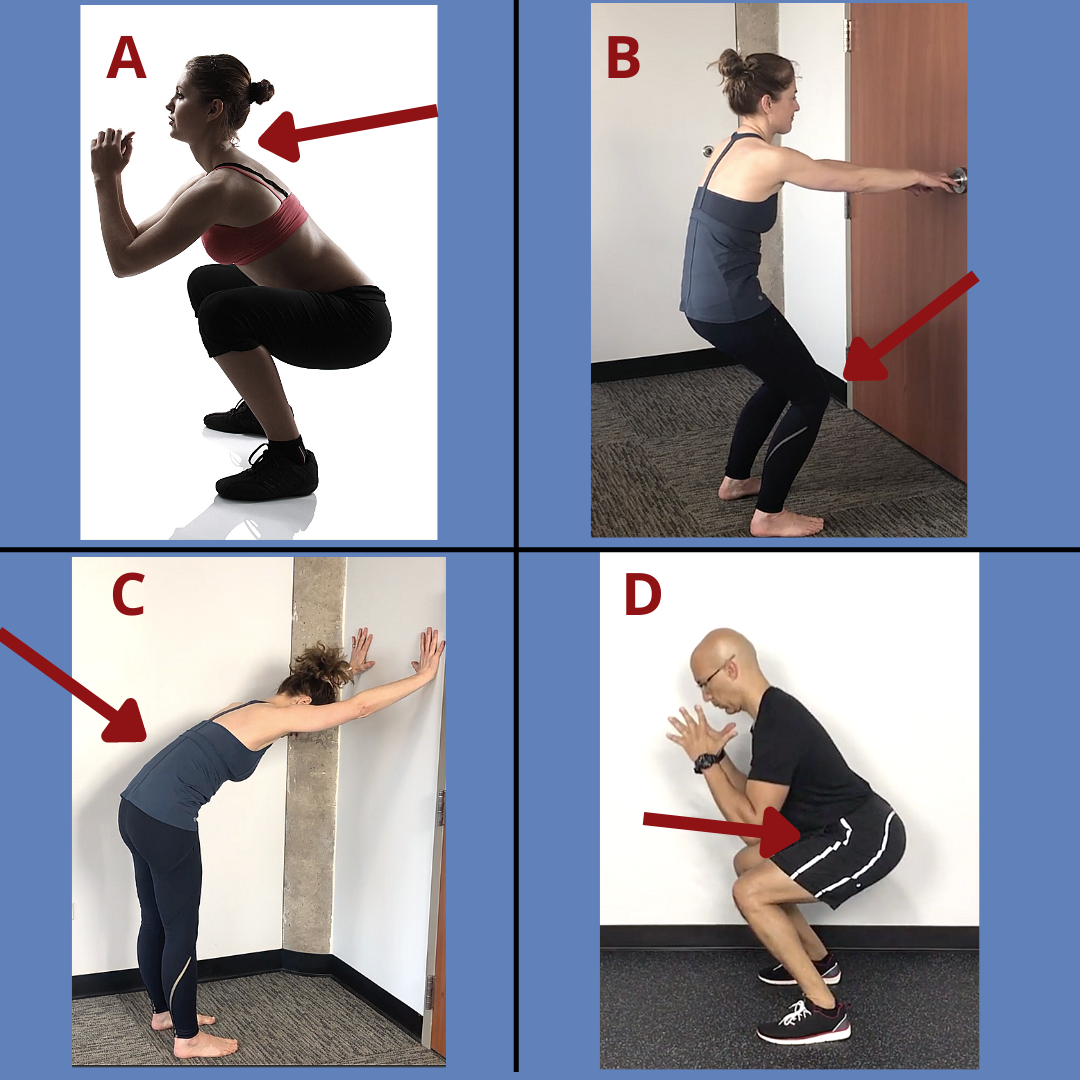
SURVEY SAYS:
Hopefully, you answered d. However, folks often say knees; yes, your knees should bend when you squat or sit. However, it should not be the first place that you move.
You can see by picture (d) that as the person goes into the squat, the whole torso moves from the hips to the head.
If you stand up and place your hands on the crease on the top, front of your leg, where your thigh bone meets your hip joint, this is the joint or area where you should start moving when you sit or squat.
It seems like it should be easy; however, for many people, the first thing they do is bend their knees (pic B) or their back (pic C).
Initiating the movement from your hip joint will help save your knees and spine. It will also help with your balance. Bending through your hips he...
4 Keys to Improving Flexibility
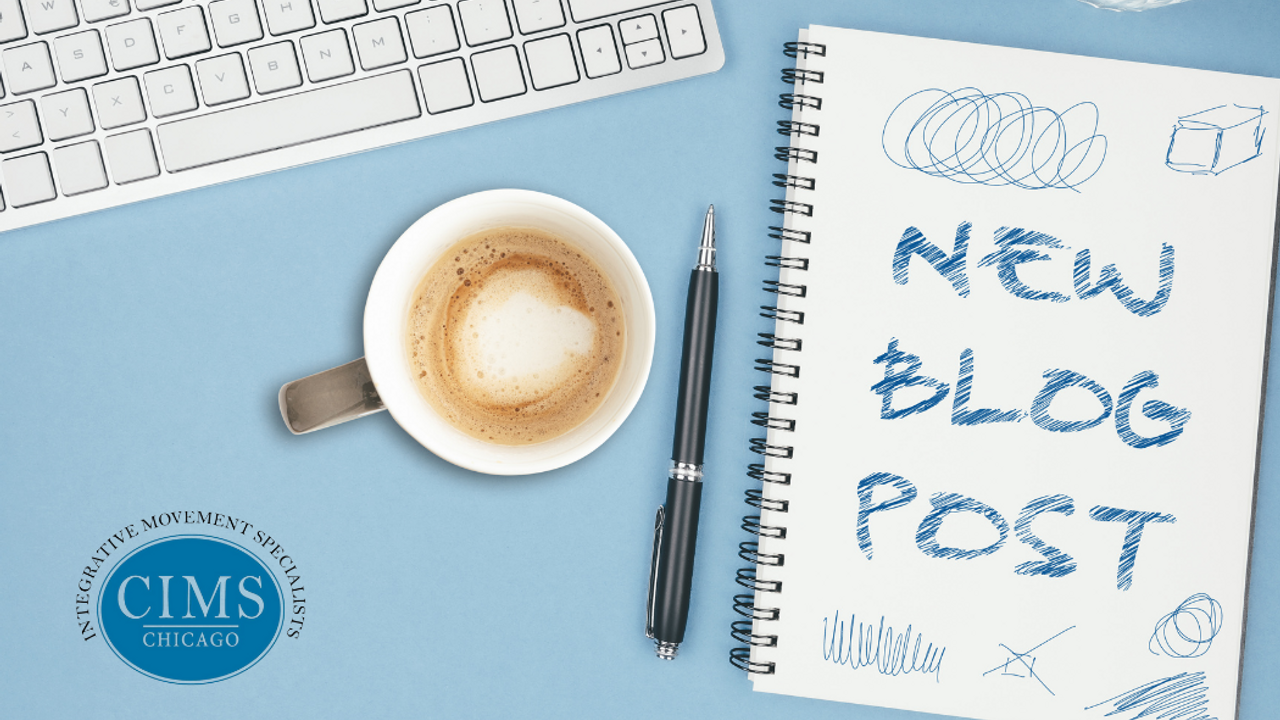
One of the most common reasons clients see us is to improve flexibility, or as one client put it the other day, "I would like to move more fluidly".
Injuries like falls, car accidents, sprain, strains, etc., and surgery can directly and immediately affect your flexibility. We will look at these in the future and their effects on walking, balancing, exercising, breathing, and flexibility.
There are some key elements we must include in our everyday life to maintain flexibility if we have had a history of injury or not.
- Mind our posture. (This may be different from what elders told you.)
- Breathe well. (Yes, we know you breathe all day.)
- Use the right muscles for the task we are performing. (Yep, work smarter, not harder)
- Check and reset as needed. (Like any machine, you have to check-in and sometimes reset if things are working efficiently.)
Today, we will look more closely at our posture. From the time we were small, we may have heard, 'sit up straight.' You also may have...


